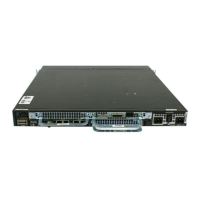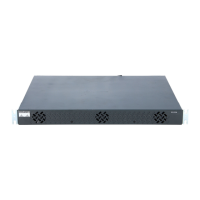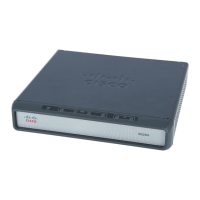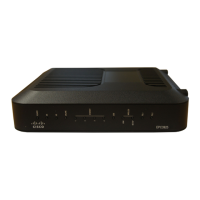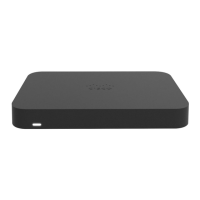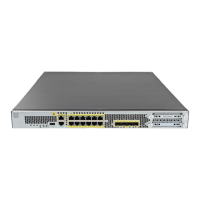3-26
Cisco AS5350 and Cisco AS5400 Universal Gateway Software Configuration Guide
OL-3418-02 B0
Chapter3 Basic Configuration Using the Command-Line Interface
Configuring the Universal Port Card and Lines
Tip If you are having trouble:
• Make sure the serial interface and protocol are up by entering the show interface serial command.
• Check the IP address.
AS5400# show interface serial 1/0:23
Serial1/0:23 is up, line protocol is up (spoofing)
Hardware is DSX1
Internet address is 172.16.254.254/16
MTU 1500 bytes, BW 64 Kbit, DLY 20000 usec,
reliability 255/255, txload 1/255, rxload 1/255
Encapsulation PPP, loopback not set
Last input 00:00:07, output never, output hang never
Last clearing of "show interface" counters 00:00:06
Queueing strategy:fifo
Output queue 0/40, 0 drops; input queue 0/75, 0 drops
1 minute input rate 0 bits/sec, 0 packets/sec
1 minute output rate 0 bits/sec, 0 packets/sec
0 packets input, 0 bytes, 0 no buffer
Received 0 broadcasts, 0 runts, 0 giants, 0 throttles
0 input errors, 0 CRC, 0 frame, 0 overrun, 0 ignored, 0 abort
0 packets output, 0 bytes, 0 underruns
0 output errors, 0 collisions, 0 interface resets
0 output buffer failures, 0 output buffers swapped out
0 carrier transitions
Timeslot(s) Used:24, Transmitter delay is 0 flags
AS5400#
Configuring the Universal Port Card and Lines
Rather than the more traditional line/modem one-to-one correspondence, lines are mapped to a Service
Process Element (SPE) that resides on the universal port card. Associated SPE firmware serves a
function similar to modem code on a MICA modem.
One SPE provides services for multiple ports. Busyout and shutdown can be configured at the SPE or
port level. There are several universal port cards, each with a different number or ports, available for the
Cisco AS5350 and Cisco AS5400.
The universal port card performs the following functions:
• Converts pulse code modulation (PCM) bitstreams to digital packet data
• Forwards converted and packetized data to the main processor, which examines the data and
forwards it to the backhaul egress interface
• Supports all modem standards (such as V.34 and V.42bis) and features, including dial-in and dial-out

